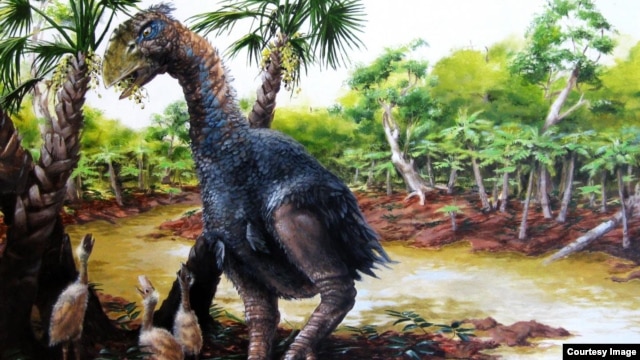
The icy cold realm of the Arctic is not where one would expect to find giant birds, but researchers say they have confirmed the existence of a giant flightless bird that once roamed the area.
Writing in the journal Scientific Reports, researchers from the University of Colorado Boulder and the Chinese Academy of Sciences in Beijing say they confirmed the discovery based on a single, fossilized toe of the creature that lived 53 million years ago.
The toe was originally found in the 1970s on Ellesmere Island in the Canadian Arctic, but was only recently “closely examined.” The researchers describe the toe as a “dead ringer” for another fossilized toe bone found in the U.S. state of Wyoming. They are from the foot of a massive bird called Gastornis.
Gastornis, researchers say, was likely about two meters in height and likely weighed several hundred kilograms. The bird was originally thought to be a “fearsome carnivore” but now, it’s believed to be a vegan that used its beak to munch on foliage, nuts, seeds and fruit.
Gastornis fossils have also been unearthed in Asia and Europe.
“We knew there were a few bird fossils from up there, but we also knew they were extremely rare,” said CU-Boulder professor Jaelyn Eberle, who co-authored the study.
When Gastornis roamed the Arctic, it was a far different place, with researchers comparing it to the cypress swamps in the Southeastern U.S. Other fossils from Ellesmere Island reveal it was once home to turtles, alligators, primates and other “large hippo-like and rhino-like mammals.”
Today, the island is “one of the coldest, driest environments on Earth,” researchers said.
[Source:-Voanews]

